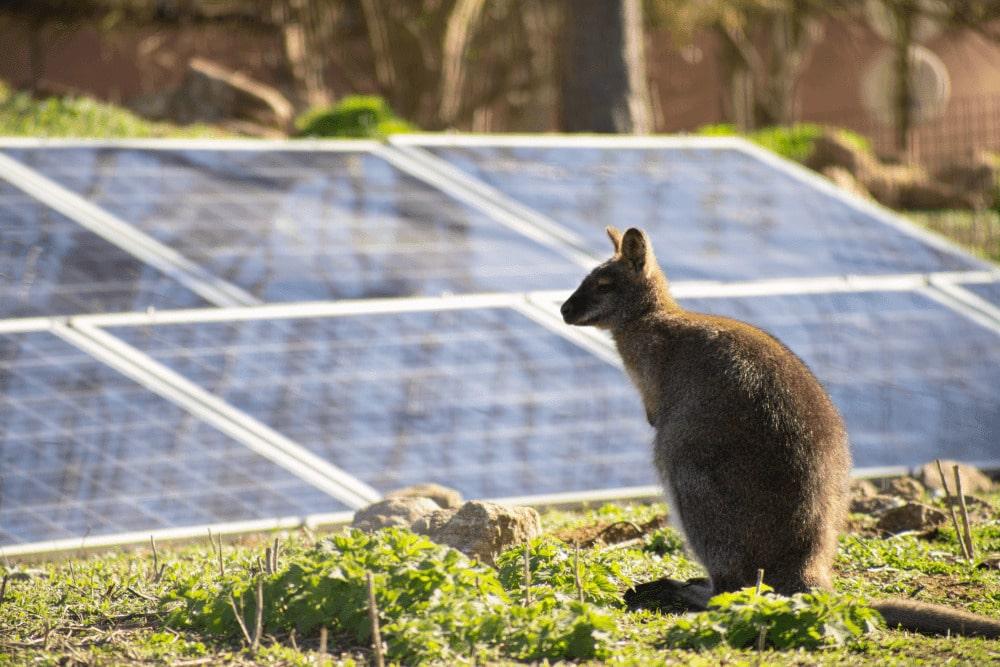The Association of Zoos and Aquariums (AZA) is making waves in environmental stewardship with its latest initiative, “Swimming Towards Sustainability.” As concerns over aquatic ecosystems grow, the AZA is leading efforts to promote sustainable practices within its member institutions. This program aims to enhance conservation, reduce ecological footprints, and inspire public awareness about the delicate balance of water environments. Through collaborative projects, innovative research, and community engagement, the AZA is positioning itself at the forefront of sustainability in the world of zoos and aquariums.
Innovative Conservation Efforts Drive AZA Aquariums Towards Eco-Friendly Practices
Across the United States, AZA-accredited aquariums are adopting groundbreaking strategies to minimize their environmental footprint. From advanced water filtration systems to harnessing renewable energy sources, these institutions lead by example in marine conservation. Key initiatives include green building designs using recycled and sustainable materials, and the implementation of intelligent waste-management programs that drastically reduce landfill contributions. Aquariums are also enhancing their live exhibits with eco-friendly technology, such as LED lighting and solar-powered pumps, to maintain aquatic habitats with minimal energy consumption.
Collaboration plays a pivotal role in these eco-friendly advancements. Through partnerships with environmental organizations, researchers, and local communities, AZA aquariums are pioneering projects that protect endangered species and restore natural ecosystems. These efforts are reflected in measurable outcomes:
- 30% reduction in annual water usage
- 25% increase in onsite renewable energy generation
- Zero waste certifications obtained by select facilities
| Conservation Focus | Recent Achievement | Impact Metric |
|---|---|---|
| Coral Reef Restoration | Created over 100 artificial reefs | 15,000 marine species supported |
| Plastic Waste Reduction | Eliminated single-use plastics | 500 lbs diverted from oceans |
| Energy Efficiency | Installed solar arrays | Reduced carbon emissions by 40% |
Collaborative Strategies Enhance Marine Habitat Preservation and Public Awareness
By uniting efforts across institutions, the Association of Zoos and Aquariums (AZA) is driving groundbreaking initiatives that make marine conservation more effective and far-reaching. These collaborative networks empower aquariums, research organizations, and local communities to share knowledge and resources, fostering innovative solutions to persistent challenges like habitat degradation and species decline. Importantly, cross-sector partnerships enhance the capability to monitor fragile ecosystems, allowing for adaptive management practices that respond swiftly to environmental changes and human impacts.
Key components of this collaborative approach include:
- Joint research projects targeting endangered marine species
- Community-based outreach programs that encourage stewardship
- Data-sharing platforms enabling real-time habitat monitoring
- Public engagement campaigns promoting sustainable behaviors
| Partner | Role | Impact |
|---|---|---|
| Marine Biologists | Research & Monitoring | Enhanced species data |
| Local Communities | Stewardship & Education | Increased conservation advocacy |
| Policy Makers | Legislation & Funding | Stronger habitat protections |
Recommendations for Strengthening Sustainability Through Community Engagement and Policy Advocacy
Building long-lasting sustainability requires a collaborative approach that blends community involvement with assertive policy advocacy. Local communities are the backbone of change, and empowering them to take active roles in conservation efforts can create a ripple effect across regions. Encouraging hands-on participation through educational programs, citizen science initiatives, and volunteer opportunities strengthens the connection between people and aquatic ecosystems. AZA-accredited institutions play a critical role by acting as hubs for environmental education and fostering a culture where stewardship becomes a shared responsibility.
Simultaneously, influencing policymakers to enact and enforce regulations aligned with conservation goals remains essential. Targeted advocacy campaigns, backed by robust scientific data, can shape legislation that protects vital habitats and curbs unsustainable practices. The synergy between grassroots engagement and strategic policy efforts is best summarized in the following table showcasing key action points:
| Community Engagement | Policy Advocacy |
|---|---|
| Interactive education sessions | Lobbying for habitat protection laws |
| Citizen science monitoring programs | Promotion of sustainable fishing regulations |
| Community-led cleanup campaigns | Incentives for eco-friendly businesses |
| Public forums and stakeholder roundtables | Strengthening enforcement mechanisms |
In Retrospect
As the Association of Zoos and Aquariums continues to champion sustainable practices within aquatic environments, its commitment serves as a crucial beacon for conservation efforts worldwide. By fostering collaboration, advancing education, and implementing innovative strategies, the AZA is not only safeguarding marine life but also inspiring a broader movement toward environmental responsibility. Swimming towards sustainability, the AZA sets a compelling example of how institutions can blend public engagement with tangible action to protect our planet’s fragile ecosystems for generations to come.





